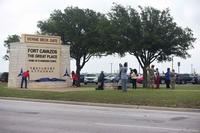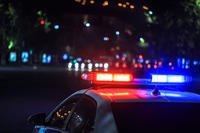Doubts are growing over North Korea's claim on Wednesday that it successfully tested a hydrogen bomb, according to multiple news reports.
Experts are pointing to the explosive power, or yield, of the blast as evidence that the bomb wasn't big or powerful enough to be a thermonuclear weapon.
An article by Choe Sang-Hun, a reporter for The New York Times, reported that the yield, at six kilotons, was closer in size to an atomic bomb, not a hydrogen bomb:
"Lee Cheol-woo, a member of the intelligence committee of the South Korean National Assembly, said his country's National Intelligence Service had estimated the explosive yield that was equivalent to six kilotons of TNT."
A hydrogen bomb relies on the heat generated from nuclear fission to trigger a fusion reaction and is far more powerful than an atomic bomb, typically generating yields of hundreds or thousands of kilotons. For example, the U.S. in 1952 tested its first thermonuclear device, Ivy Mike, which generated a yield of 10.4 megatons, or 10,400 kilotons.
The estimated yield of the latest North Korean test is actually comparable, if not lower than, one of its previous detonations.
Before this week, the country over the past decade carried out three nuclear tests, which steadily increased in yield from less than a kiloton in 2006 to about two kilotons in 2009 to six to seven kilotons in 2013, according to the Congressional Research Service.
The first two tests are believed to have used plutonium rather than highly enriched uranium. Obtaining the fissile material is the main hurdle in building a nuclear weapon. North Korea is estimated to have between 30 and 50 kilograms of separated plutonium -- enough for four to seven weapons, according to CRS.
Experts also pointed to the lower-than-expected tremor in the wake of the North Korean test. While the U.S. acknowledged "seismic activity" near a nuclear site in the country, it was less than expected for a thermonuclear detonation.
As Anna Fifield, a reporter for The Washington Post, reported:
"The tremor Wednesday was recorded at 5.1 magnitude, according to the U.S. Geological Survey -- the same size as the 2013 nuclear test and slightly bigger than the ones in 2009 (4.5) and 2006 (4.1)."
Even so, the U.S. joined its allies in the region and around the world in condemning North Korea's nuclear test. Defense Secretary Ash Carter and South Korean Defense Minister Han Min-koo on Wednesday talked about the incident over the phone.
"Secretary Carter reaffirmed the ironclad commitment of the United States to the defense of the ROK, and that this commitment includes all aspects of the United States' extended deterrence," according to a statement from the Pentagon. "Minister Han emphasized the strength of the U.S.-ROK alliance and its vital role in assuring peace and stability on the Korean Peninsula and across the Asia-Pacific. Carter and Han agreed that North Korea's provocations should have consequences."
After North Korea's 2013 underground nuclear detonation, the U.S. flew pairs of stealth aircraft over South Korea, including F-22 fighter jets and nuclear-capable B-2 bombers, in a show of force against the North.










